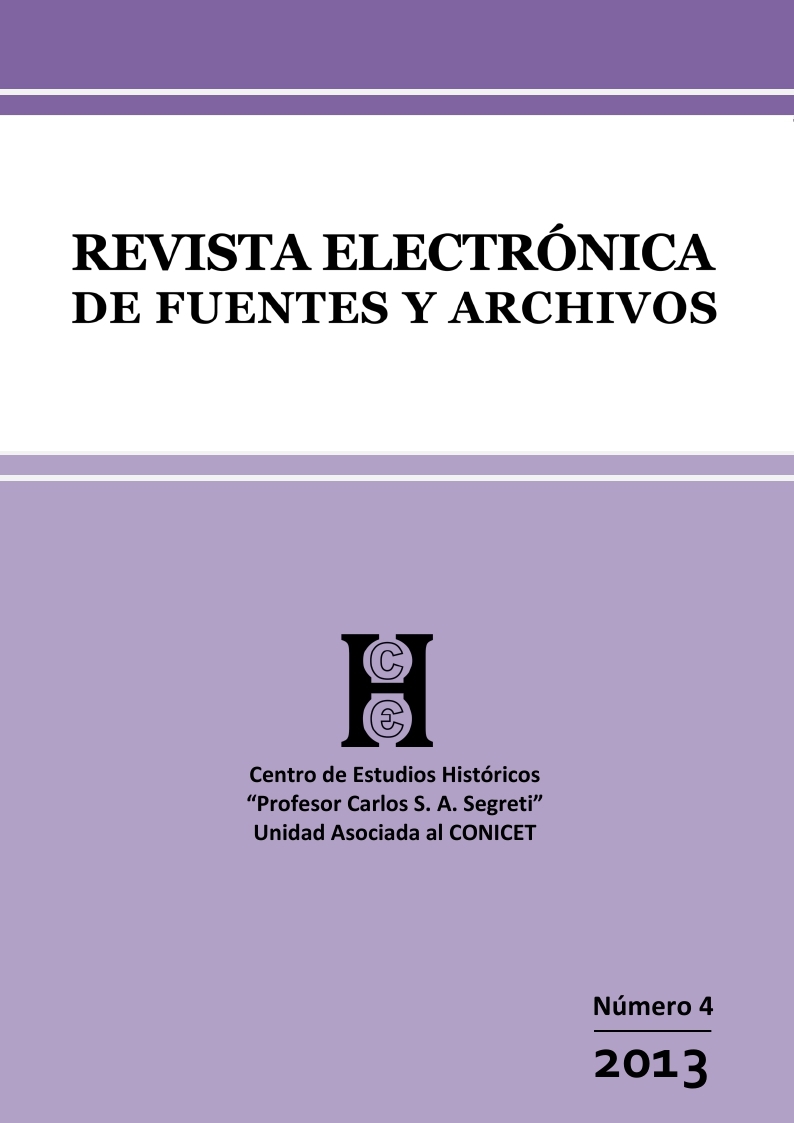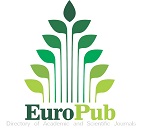Science education collections as sources for the History of Science
Keywords:
collections, natural history, secondary schools, ArgentinaAbstract
The purpose of this paper is twofold: on the one hand, we discuss the potentialities that the study of scientific collections of secondary schools offers to the History of Science. On the other, we will present some issues and documental sources related to the formation of school cabinets of natural history in Argentina. These collections testify the flourishing trade of scientific materials and the growth of didactic industry during the second half of the 19th and the early 20th century. The study of these materials allows examining the circulation of scientific knowledge and objects and how they were transformed in that movement and use. Also, they can be useful sources to investigate multiple aspects of the material and visual culture of science and education. Both in the design and use of these artifacts, it is possible to analyse a diverse group of pedagogical, conceptual, aesthetic and technical decisions, and even those commercial, about the presentation of scientific information.
Downloads
References
ALBERTI Samuel, “Objects and the Museum”, Isis, vol. 96, 2005, pp. 559-71.
BRANDÃO José M., “Um aspecto particular do apoio dos Serviços Geológicos Portugueses ao ensino secundário das geociências: oferta de colecções didácticas”, José M. BRANDÃO, Pedro M. CALLAPEZ, Octávio MATEUS, Paulo CASTRO (eds.), Colecções e museus de Geologia: missão e gestão, Coimbra, Museu Mineralógico e Geológico da Universidade de Coimbra (MMGUC), Centro de Estudos de História e Filosofia da Ciência (CEHFCi), 2010, pp. 343-350.
BUCCHI Massimiano, “Images of science in the classroom: wall charts and science education 1850-1920”, British Journal of History of Science, vol. 31, 1998, pp. 161-184.
DASTON Lorraine, “The Glass Flowers”, Lorraine DASTON (ed.), Things That Talk. Object Lesson from Art and Science, New York, Zone Books, 2008, pp. 223-254.
DE CHADAREVIAN Soraya y Nick HOPWOOD, Models: the third dimension of science, California, Stanford University Press, 2002.
DOLAN Brian, “Pedagogy through print: James Sowerby, John Mawe and the problem of colour in early nineteenth-century natural history illustration”, British Journal of History of Science, vol. 31, 1998, pp. 275-304.
FIORINI Graziana, Luana MAEKAWA y Peter STIBERC, “Save the Plants: Conservation of Brendel Anatomical Botany Models”, The Book and Paper Group Annual 27, vol. 35, 2008, pp. 36-45.
GARCÍA Susana V., Enseñanza científica y cultura académica. La Universidad de La Plata y las Ciencias Naturales (1900-1930), Rosario, Prohistoria, 2010.
GARCÍA Susana V., “Museos escolares, colecciones y la enseñanza elemental de las ciencias naturales en la Argentina de fines del siglo XIX”, História, Ciências, Saúde – Manguinhos, vol. 14, núm. 1, 2007, pp. 173-196.
GARCÍA Susana V., “Museos y materiales de enseñanza en la Argentina, 1890-1940”, Américo CASTILLA (comp.), El museo en escena. Políticas culturales y museos en América Latina, Buenos Aires, Paidós, 2010.
GARCÍA Susana V. e Irina PODGORNY, “Pedagogía y nacionalismo en la Argentina: lo internacional y lo local en la institucionalización de la enseñanza de la arqueología”, Trabajos de Prehistoria, Madrid, vol. 58, núm. 2, 2001, pp. 9-26.
GOMES Inês, “Colecções escolares e práticas de ensino: a colecção de história natural do colégio militar de Lisboa”, III Foro Ibérico de Museísmo Pedagógico, V Jornadas Científicas de la SEPHE, disponible en: http://congresos.um.es/fimupesephe/fimupesephe2012/paper/view/15061.
GONZÁLEZ DE LA LASTRA Leonor, “Instrumentos científicos antiguos en el Instituto San Isidro. Recuperación y contextualización”, Arbor: Ciencia, pensamiento y cultura, vol. 187, núm. 749, 2011, pp. 561-571.
GROB Bart, The World of Auzoux: Models of Man and Beast in Papier-Mâché, Leiden, Museum Boerhaave, 2000.
HOPWOOD Nick, Embryos in wax. Models from Ziegler studio, Cambridge, Cambridge y University Press, 2002.
HOPWOOD Nick, “‘Giving Body’ to embryo's: Modeling, Mechanism, and the Microtome in Late Nineteenth-Century Anatomy”, Isis, vol. 90. núm. 3, 1999, pp. 470-472.
KOPYTOFF Igor, “The cultural biography of things: Commoditization as process”, Arjun APPADURAI (ed.), The Social Life of Things: Commodities in Cultural Perspective, Cambridge, Cambridge University Press, 1986, pp. 64-94.
LAFUENTE Antonio, Alberto ELENA, María Luisa ORTEGA (eds.), Mundialización de la ciencia y cultura nacional, Madrid, Doce Calles, 1993.
LÓPEZ MARTÍNEZ José D. (coord.), Las ciencias en la escuela. El material científico y pedagógico de la Escuela Normal de Murcia. Murcia, Eds. de la Universidad de Murcia, 2012, disponible en: http://libros.um.es/editum/catalog/book/191.
LÓPEZ-OCÓN Leoncio, Santiago ARAGÓN, Mario PEDRAZUELA (eds.), Aulas con Memoria. Ciencia, Educación y Patrimonio en los institutos históricos de Madrid (1837-1936), Madrid, CEIMES, 2012
MARTÍNEZ RUIZ-FUNES María José, “Los catálogos de material de enseñanza como fuente para el estudio de la cultura material: la recepción y difusión del método Froebel en España”, III Foro Ibérico de Museísmo Pedagógico, V Jornadas Científicas de la SEPHE, disponible en: congresos.um.es/fimupesephe/fimupesephe2012/paper/view/15081/12051
MAYONI María Gabriela, Puesta en Valor de Bienes Culturales en el Colegio Nacional de Buenos Aires. Colecciones Didácticas de Modelos Anatómicos en Papel Maché del Siglo XIX, Buenos Aires, Tesis de Licenciatura, 2011.
MAYONI María Gabriela, Amalia DE GRAZIA, Eugenia GUIDOBONO, Ana WORTLEY, “La preservación del patrimonio educativo en el Colegio Nacional de Buenos Aires”, Ge-conservación, Madrid, núm. 3, 2012, pp. 53-68.
PODGORNY Irina, El Sendero del tiempo y de las causas accidentales. Los espacios de la prehistoria en la Argentina, 1850-1910, Rosario, Prohistoria, 2009.
PODGORNY Irina, “La mirada que pasa: museos, educación pública y visualización de la evidencia científica”, História, Ciências, Saúde-Manguinhos, vol. 12, 2005, pp. 231-264.
PODGORNY Irina y María Margaret LOPEZ, El desierto en una vitrina. Museos e historia natural en la Argentina, México, Limusa, 2008.
PODGORNY Irina y María Margaret LOPEZ, “Trayectorias y desafíos de la historiografía de los museos de historia natural en América del Sur”, Anais do Museu Paulista, vol. 21, núm. 1, 2013, pp. 15-25.
RABAZAS ROMERO Teresa y Sara RAMOS ZAMORA, “Patrimonio histórico-educativo de España. Museología y museografía”, Julio RUIZ BERRIO (ed.), El patrimonio histórico-educativo: su conservación y estudio, Madrid, Biblioteca Nueva, 2010, pp. 169-200.
RAJSCHMIR Cinthia, “Los museos escolares argentinos. De la enseñanza de las ciencias a la construcción de lo nacional”, Silvina GVIRTZ (dir.), El color de lo incoloro. Miradas para pensar la enseñanza de las ciencias, Buenos Aires/México, Novedades Educativas, 2000, pp. 149-175.
REILING Henri, “Beter dan de natuur”, Jan BRAND y Alex de VRIES (eds.), NEO, Utrecht, Utrecht Central Museum, 2003, pp. 221-235, disponible en: http://members.ziggo.nl/here/neo.html.
VAN GELDEREN Adolfo, Elementos de Historia Natural o sea explicación de los cuadros alemanes de Schreiber y mapas ingleses de Johnston, Buenos Aires, Imprenta Biedma, 1877.
Downloads
Published
How to Cite
Issue
Section
License

This work is licensed under a Creative Commons Attribution-NonCommercial-ShareAlike 4.0 International License.
Se puede compartir (copiar y redistribuir el material en cualquier medio o formato) y adaptar (remezclar, transformar y construir a partir del material), siempre que: a) se cite la autoría y la fuente original de su publicación (revista, editorial y URL de la obra); b) no se use con fines comerciales; c) la distribución de las obras derivadas se haga con una licencia igual a la que regula la obra original.




















